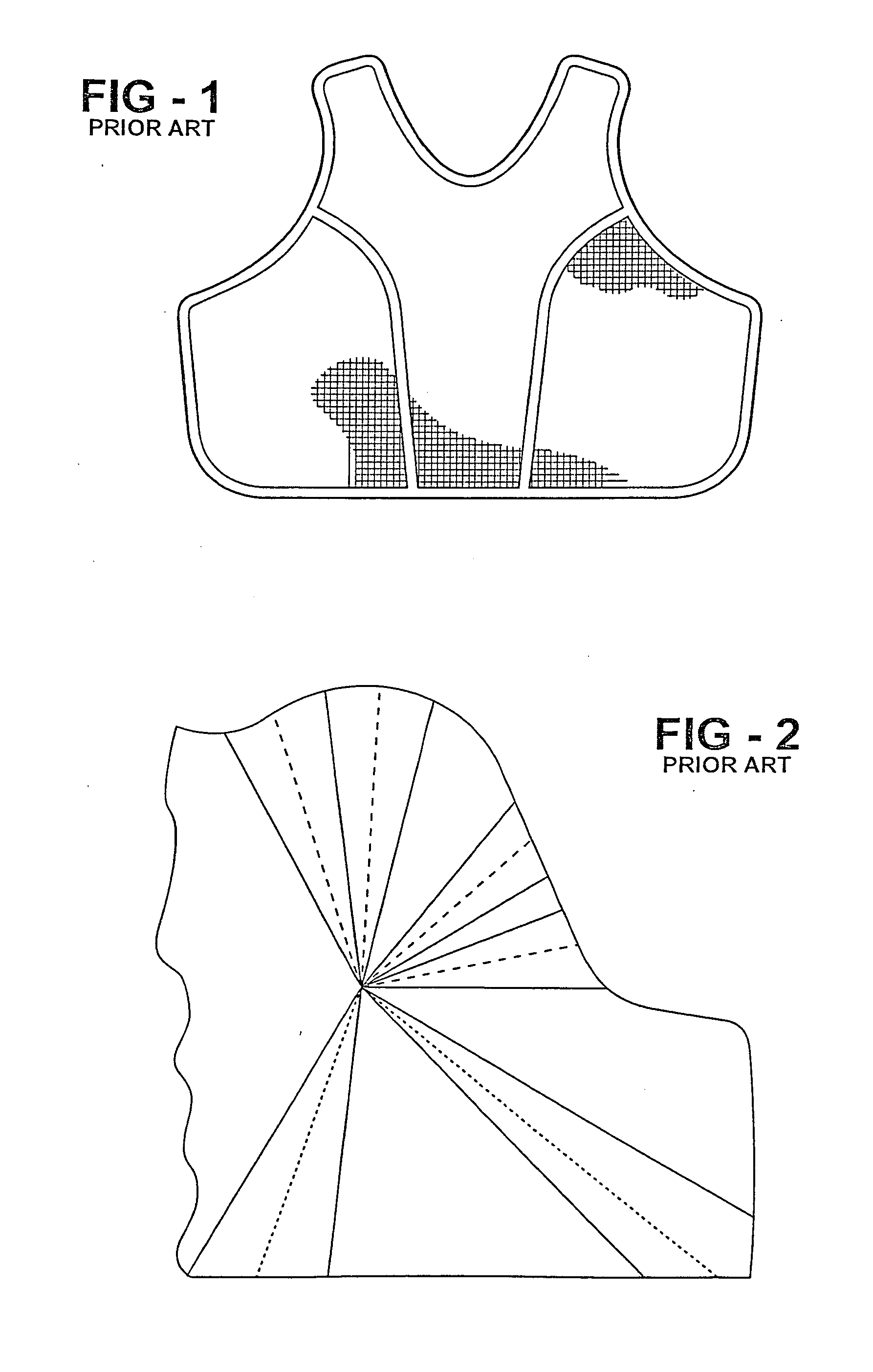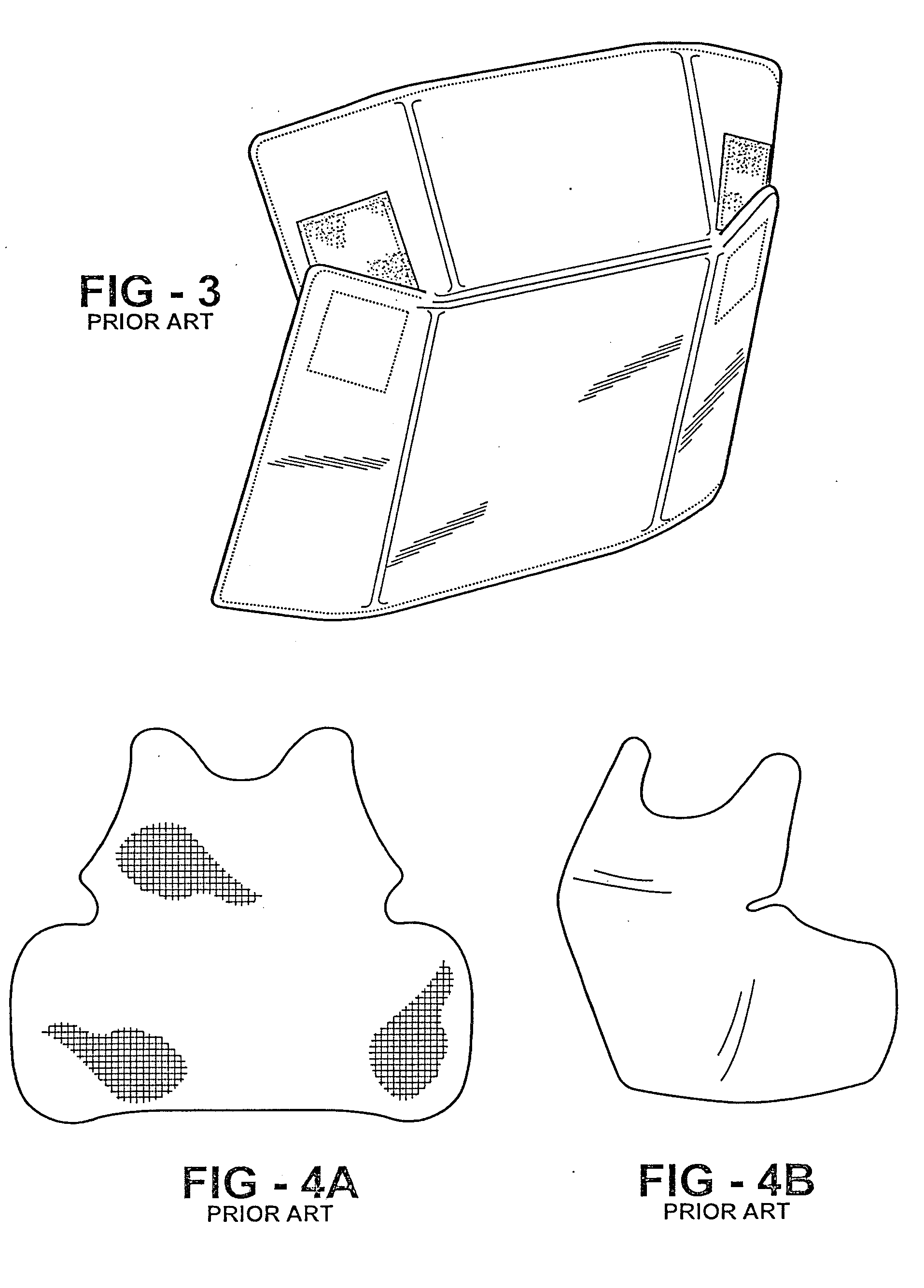Molded Torso-conforming body armor including method of producing same
a technology of body armor and torso, which is applied in the field of protection body armor, can solve the problems of life-threatening hematomas, none of the early vests of this type lend themselves well to forming the compound curves needed to produce a form-fitting female vest conforming to the torso, and none of the breasts of the female vest, etc., and achieves rapid and lateral energy dissipation, greatly reduced ability to flex, absorb and dissip
- Summary
- Abstract
- Description
- Claims
- Application Information
AI Technical Summary
Benefits of technology
Problems solved by technology
Method used
Image
Examples
Embodiment Construction
[0042]The invention, Molded Torso-Conforming Body Armor and Method of Producing Same, broadly considered, includes a contoured, form-fitting torso panel 10. Panel 10 is formed from two or more adjoining sheets 11 of woven ballistic fabric, each sheet 11 having an upper side 11a and an underside 11b, as well as a top border 11c, bottom border 11d, first side border 11e and second side border 11f. All of the adjoining sheets 11 are substantially uniform size and shape with borders 11c, 11d, 11e and 11f, substantially conforming as shown in FIG. 10. Each sheet 11 is in parallel contact with at least one other adjoining sheet 11, with said parallel contact being between upper side 11a of one sheet and the underside 11b of the immediate adjoining sheet 11.
[0043]The woven ballistic fabric of each sheet 11, as formed, is constructed of weft yarns 12 and warp, or fill yarns, 13, in a long float weave 14 in at least one direction, as shown in FIGS. 6, 7, and 8.
[0044]An adhesive means 15, as ...
PUM
| Property | Measurement | Unit |
|---|---|---|
| Temperature | aaaaa | aaaaa |
| Length | aaaaa | aaaaa |
| Length | aaaaa | aaaaa |
Abstract
Description
Claims
Application Information
 Login to View More
Login to View More - R&D
- Intellectual Property
- Life Sciences
- Materials
- Tech Scout
- Unparalleled Data Quality
- Higher Quality Content
- 60% Fewer Hallucinations
Browse by: Latest US Patents, China's latest patents, Technical Efficacy Thesaurus, Application Domain, Technology Topic, Popular Technical Reports.
© 2025 PatSnap. All rights reserved.Legal|Privacy policy|Modern Slavery Act Transparency Statement|Sitemap|About US| Contact US: help@patsnap.com



